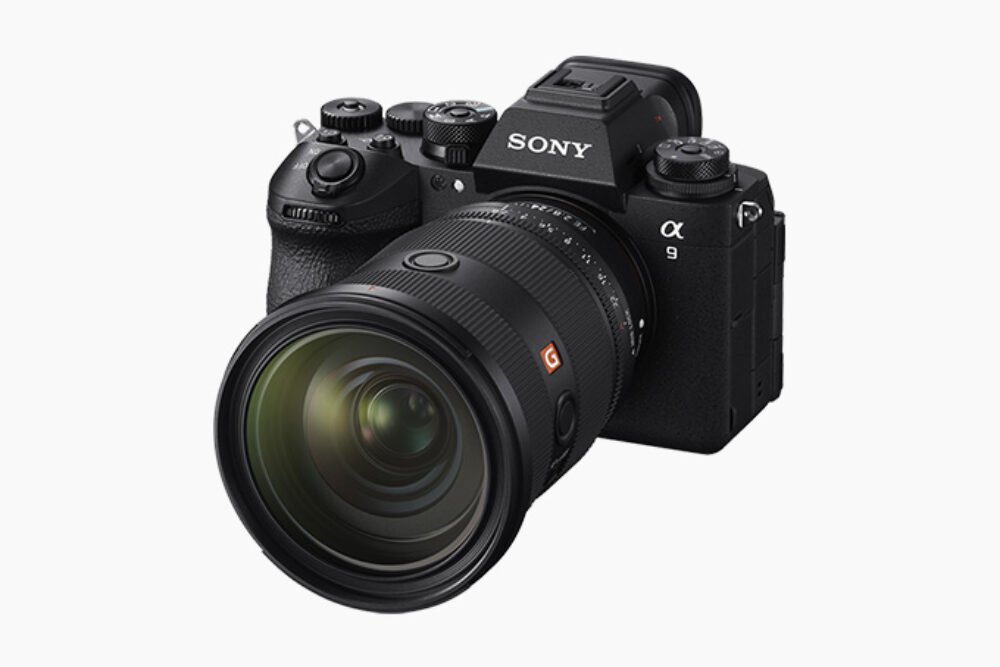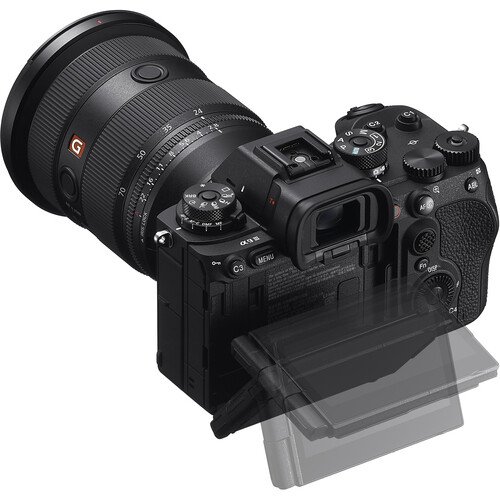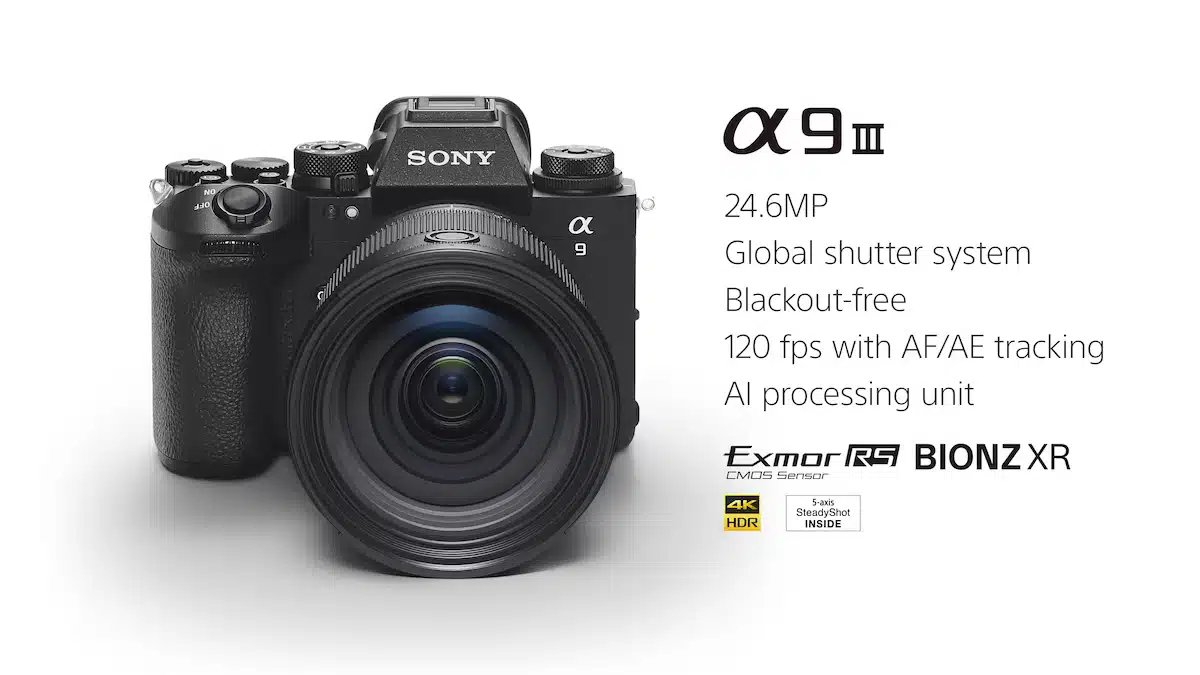Sony Alpha a9 III Review: The Moment, Redefined

Every so often, a product arrives that doesn’t just iterate on the previous generation but fundamentally redraws the boundaries of what’s possible. The Sony Alpha a9 III is one of those products. While its body may look familiar, the technology within represents a seismic shift in digital imaging. At its core is a feature photographers have dreamed of for decades: a full-frame global shutter sensor. This isn’t just an upgrade; it’s a new chapter for speed, precision, and creative freedom.
Performance: Beyond Speed
At the heart of the a9 III’s prowess is a spec sheet that reads like science fiction. The camera can capture full 24.6MP RAW images at an almost unbelievable 120 frames per second—with full autofocus and auto-exposure tracking, and with absolutely zero viewfinder blackout. This is made possible by the global shutter, which exposes every single pixel on the sensor at the exact same time. The practical implication is the complete eradication of rolling shutter distortion. Fast-moving subjects like golf clubs, helicopter blades, or panning shots of race cars are rendered with perfect geometric accuracy, free from the skewed, “jello” effect that plagues traditional sensors.

But the revolution doesn’t stop there. The global shutter enables flash synchronization at any shutter speed, all the way up to a staggering 1/80,000s. For photographers working with flash outdoors, this is a game-changer. You can now overpower bright sunlight with a small, portable strobe, using high shutter speeds to darken the ambient light and create dramatic portraits without needing neutral density filters or relying on high-speed sync workarounds. Furthermore, the new Pre-Capture function lets you record images for up to a full second before you fully press the shutter, ensuring you never miss the peak of the action. Combined with Sony’s best-in-class AI-powered autofocus, which tracks subjects with tenacious precision, the a9 III is less a camera and more a time-capturing machine.

Design, Build, and Ergonomics
Sony has wisely stuck to a familiar, refined formula for the a9 III’s body, borrowing heavily from the excellent chassis of the a7R V and a1. The ergonomics have received a welcome polish, featuring a more substantial, comfortable grip that provides better purchase, especially with long lenses. The button layout is logical, and the addition of a new, customizable C5 button on the front, near the lens mount, is a smart touch for quick access to critical functions.
The build quality is exactly what you’d expect from a flagship camera designed for professionals working in demanding environments. It feels dense, robust, and features extensive weather sealing to protect against dust and moisture. The 9.44-million-dot QXGA OLED electronic viewfinder is stunningly clear and fast, while the 4-axis multi-angle rear LCD screen offers fantastic versatility for shooting at high or low angles in both horizontal and vertical orientations. It’s a workhorse camera built for reliability, day in and day out.

Features and Image Quality
This revolutionary sensor technology does come with a trade-off, however. To accommodate the global shutter architecture, the base ISO is 250, not the more common ISO 100. In practice, this means there is a slight penalty in dynamic range and noise performance compared to a top-tier backside-illuminated (BSI) sensor when shooting at base ISO in well-lit conditions. However, the image quality is still excellent, with pleasing colors and great detail, and the noise is well-controlled as you climb the ISO ladder. For the target audience, the benefits of perfect motion capture and flash sync will almost certainly outweigh this minor compromise.
On the video front, the a9 III is no slouch. It can capture 4K video at up to 120fps (oversampled from 6K) with no crop, delivering incredibly clean and detailed footage. With support for 10-bit 4:2:2 recording, S-Log3, and S-Cinetone profiles, it’s a highly capable tool for hybrid shooters who need both world-class stills and professional-grade video in one body.
The Verdict: A Specialized Masterpiece
The Sony a9 III is not a camera for everyone, and at its steep launch price, it doesn’t pretend to be. A landscape or studio portrait photographer will find little use for its headline features and may be better served by a higher-resolution model like the a7R V. But that’s not who this camera is for.
The a9 III is a surgical instrument built for those who make their living capturing decisive moments that last for a fraction of a second. It is for the elite sports photographer on the sidelines of the Olympics, the wildlife photographer waiting for a bird to take flight, and the photojournalist who cannot afford to miss the shot. For these professionals, the ability to freeze motion perfectly, sync a flash in broad daylight at any speed, and shoot at a blistering 120 fps is not a luxury—it’s a competitive advantage that could be the difference between a good shot and an iconic one. The a9 III is a glimpse into the future of photography, and for a select group of creators, that future is available today.
Where to Buy:
Sony Alpha a9 III Quick Summary
Key Scores:
- Value: 85%
- Design: 90%
- Performance: 95%
- Quality: 92%
- Popularity: 80%
Top Pros
- ✅ Global shutter completely eliminates rolling shutter distortion.
- ✅ Blistering 120 fps burst shooting captures every moment.
- ✅ Unprecedented flash sync is available at any shutter speed.
- …
Key Cons
- ❌ The premium price tag places it out of reach for many.
- ❌ Its higher base ISO of 250 slightly impacts dynamic range.
- ❌ Specialized features are overkill for most general photographers.










 Visit Claritypoint.AI
Visit Claritypoint.AI






